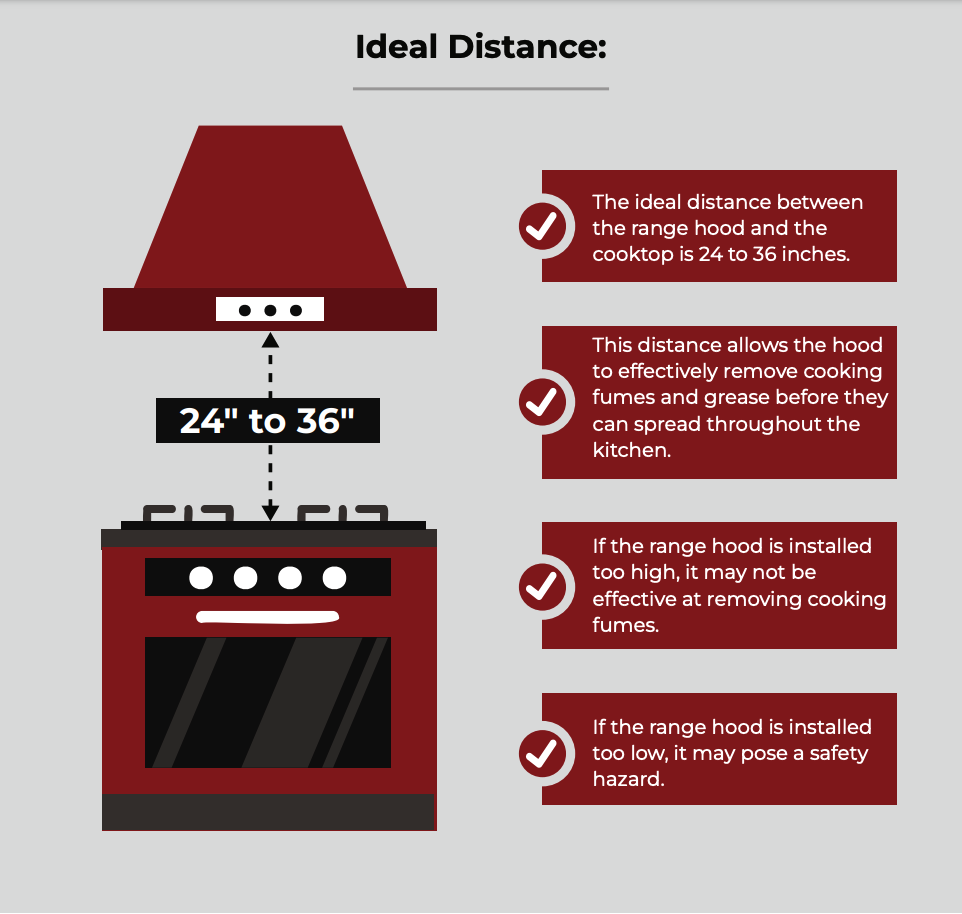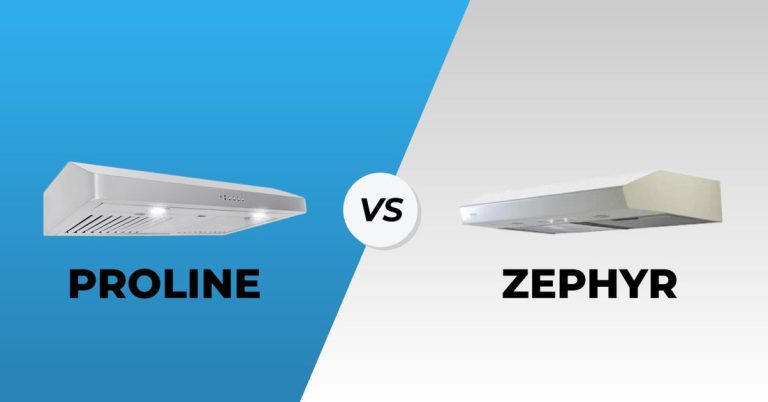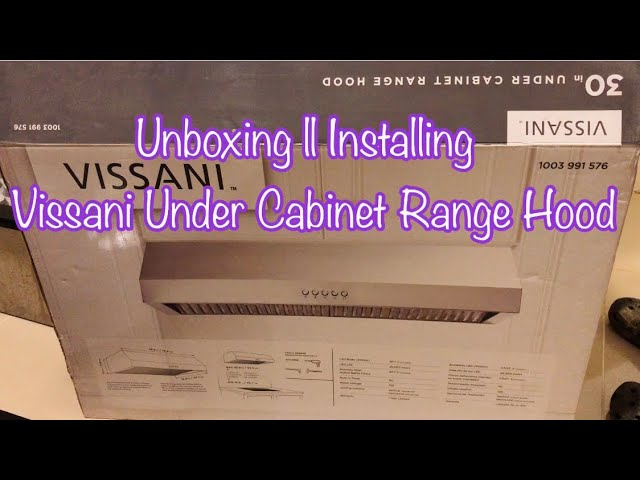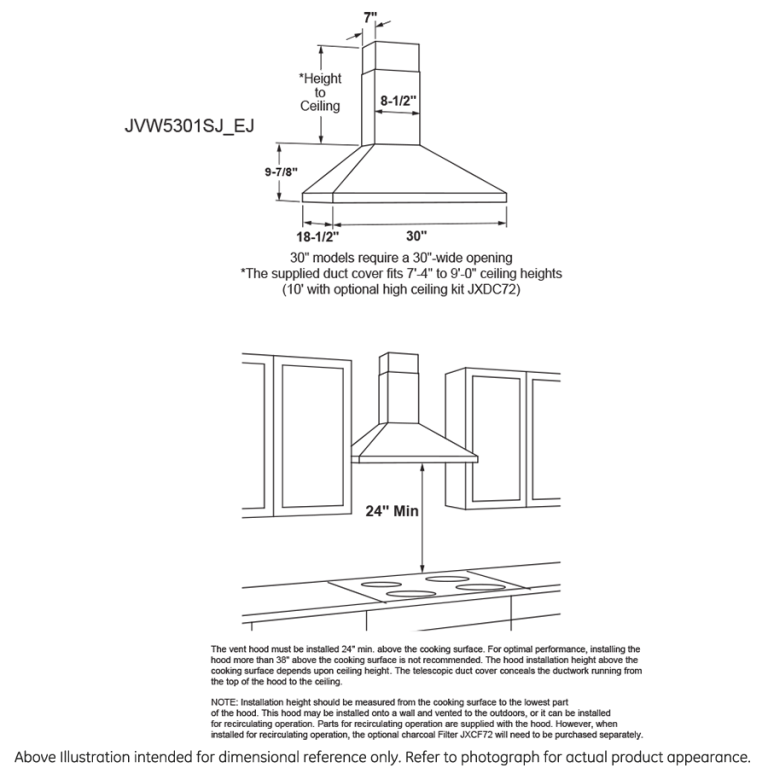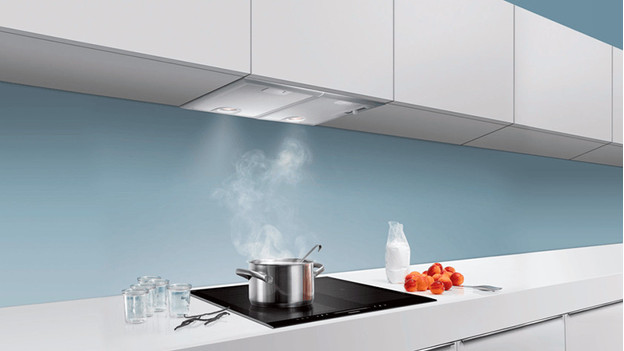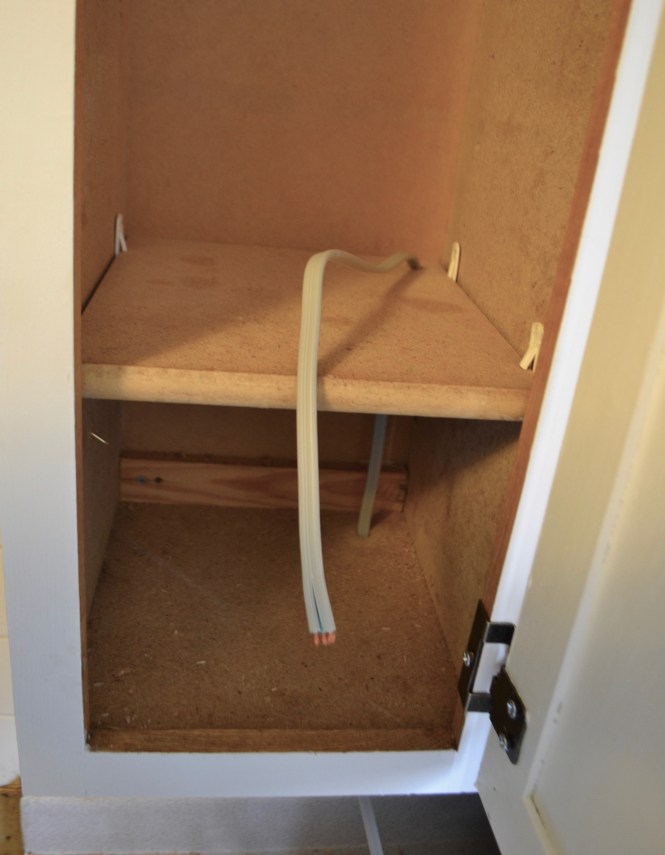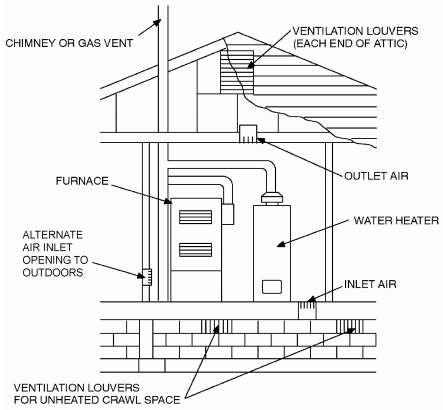The maximum distance between a cooktop and a range hood is typically 30 inches. This measurement ensures optimal ventilation and efficiency.
Selecting the right distance between your cooktop and range hood is crucial for effective cooking ventilation. A proper installation height enhances air circulation and captures smoke and odors efficiently. This guideline helps maintain a safe cooking environment while improving kitchen aesthetics.
With various cooktop types and range hood designs, understanding the ideal distance can boost performance. Homeowners often underestimate the importance of this measurement. Ensuring proper alignment not only maximizes airflow but also contributes to energy efficiency. Make informed choices to create a functional and stylish kitchen space that meets your cooking needs effectively.
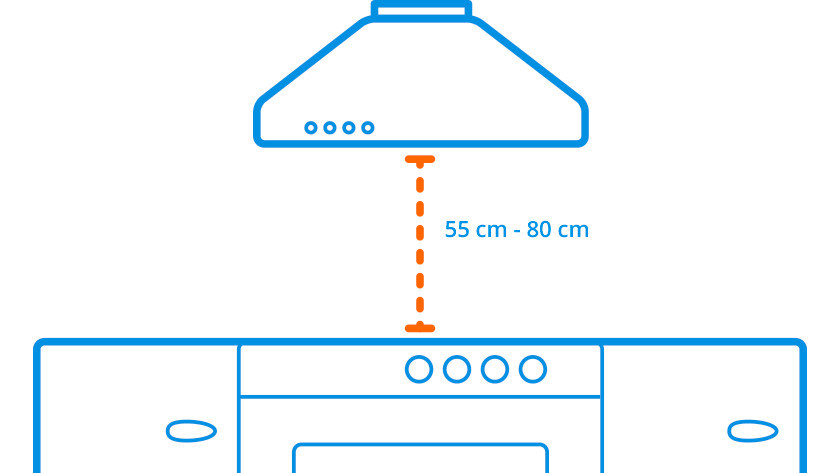
Credit: www.coolblue.nl
Introduction To Kitchen Ventilation
Proper ventilation in the kitchen is very important. It helps remove smoke, odors, and steam. This creates a safer and more comfortable cooking environment. A well-ventilated kitchen also protects your appliances and walls from damage.
The cooktop and rangehood are key components of kitchen ventilation. The rangehood should be installed at an appropriate height above the cooktop. This distance ensures it can effectively capture smoke and fumes. A good rule of thumb is to keep the maximum distance between the two around 30 inches.
Each kitchen is different. Factors like ceiling height and cooking style can affect this distance. Always consider these elements for optimal performance.
Cooktop And Rangehood Basics
Cooktops come in different types. Gas, electric, and induction are the main options. Gas cooktops use flames for heat. Electric cooktops use coils or smooth surfaces. Induction cooktops heat pots with magnetic energy.
Rangehoods also vary in style. They can be ducted or ductless. Ducted rangehoods vent air outside. Ductless rangehoods filter air and recirculate it. Wall-mounted, under-cabinet, and island rangehoods fit different kitchen layouts.
Assessing The Safety Distance
Choosing the right distance between your cooktop and rangehood is crucial. Many factors influence this distance, ensuring safety and efficiency. These factors include:
- Type of Cooktop: Gas or electric options may require different distances.
- Rangehood Design: Styles like wall-mounted or under-cabinet affect placement.
- Kitchen Height: Ceilings that are higher may allow for greater distances.
- Local Codes: Always check building regulations for specific requirements.
Standard safety protocols suggest a distance of 24 to 30 inches. This gap helps prevent fires and ensures proper ventilation. Always follow the manufacturer’s instructions for safe installation.

Credit: www.kitchenaid.com
Optimal Distance Guidelines
The optimal distance between a cooktop and rangehood is crucial for safety and efficiency. Most manufacturers recommend a distance of 24 to 30 inches. This ensures proper ventilation and captures smoke effectively.
Industry best practices suggest checking specific guidelines for each appliance. Many brands provide unique recommendations based on design. Always follow these manufacturer specifications for best results.
| Manufacturer | Recommended Distance (inches) |
|---|---|
| Brand A | 24-30 |
| Brand B | 26-32 |
| Brand C | 25-31 |
Implications Of Incorrect Installation
Incorrect installation of a cooktop and rangehood can lead to serious issues. Too much distance can reduce the efficiency of the rangehood. It may not capture smoke and odors effectively. This can lead to a cluttered kitchen environment.
On the other hand, too little space can cause problems too. It may create heat damage to the rangehood. This can also lead to fire hazards. A proper installation ensures safety and efficiency.
| Distance Issue | Risks |
|---|---|
| Too Much Distance | Reduced smoke capture, cluttered kitchen |
| Too Little Space | Heat damage, fire hazards |
Integrating Aesthetics And Safety
Integrating aesthetics and safety in kitchen design is essential. The distance between the cooktop and rangehood affects both function and style. A common distance is 30 inches from the cooktop to the bottom of the rangehood. This allows for efficient ventilation and easy access.
Designers can use creative solutions for kitchen layouts. Custom rangehoods can match the kitchen’s theme. Lowering the rangehood may create a cozy feel, while higher placements offer a sleek look. Use materials like stainless steel or wood for added charm.
Ultimately, both safety and style should be priorities. A well-planned kitchen layout enhances cooking experiences. Finding the right balance leads to a beautiful and functional space.
Maintenance And Upkeep
Regular cleaning routines are essential for your cooktop and rangehood. Dust and grease can build up quickly. Clean these surfaces with warm, soapy water. Use a soft cloth to avoid scratches. Check filters regularly and replace them if necessary.
Periodic safety checks ensure your kitchen equipment works well. Inspect electrical connections to prevent hazards. Look for any signs of wear or damage. Test the rangehood fan to make sure it operates correctly. This helps maintain a safe cooking environment.
Advanced Ventilation Technologies
Advanced ventilation technologies have transformed kitchen environments. Innovations in rangehood design focus on improved performance and aesthetics. Modern rangehoods are sleeker and more efficient.
Smart features enhance safety and convenience. Some models include automatic sensors for smoke and steam. These sensors activate the fan without manual effort. LED lights improve visibility while cooking, ensuring safety.
Many rangehoods now offer quiet operation. This allows for a more pleasant cooking experience. Energy-efficient designs help save on electricity bills.
Wireless connectivity is another exciting feature. Users can control the rangehood from their smartphones. This makes cooking even more enjoyable and hassle-free.
Compliance With Building Codes
Understanding local regulations is essential for kitchen safety. Building codes specify the maximum distance between your cooktop and rangehood. This distance ensures proper ventilation and safety during cooking. Each area may have different rules, so check your local laws.
Typical distances range from 24 to 30 inches. This height helps capture smoke and grease effectively. Proper installation prevents hazards and improves air quality in your kitchen. Always consult a professional if unsure about your installation.

Credit: www.dimensions.com
Frequently Asked Questions
What Is The Ideal Distance From Cooktop To Rangehood?
The ideal distance between a cooktop and rangehood typically ranges from 24 to 30 inches. This distance ensures effective ventilation and captures smoke and odors efficiently. However, always refer to the manufacturer’s guidelines for specific recommendations based on your cooktop and rangehood model.
How Does Distance Affect Rangehood Performance?
Distance significantly impacts rangehood performance. If the rangehood is too high, it may not capture smoke and fumes effectively. Conversely, if it’s too low, it can obstruct cooking. Maintaining the recommended distance ensures optimal suction and enhances overall kitchen air quality.
Can I Install A Rangehood Higher Than Recommended?
While you can install a rangehood higher than recommended, it may lead to reduced efficiency. Increased height can hinder the rangehood’s ability to collect smoke and grease effectively. Always consult the manufacturer’s installation guidelines for best results.
What Factors Influence The Cooktop To Rangehood Distance?
Several factors influence the cooktop to rangehood distance, including cooktop type, rangehood design, and ceiling height. Additionally, local building codes may impose specific requirements. Always consider these factors to ensure optimal ventilation and safety in your kitchen.
Conclusion
Finding the right distance between your cooktop and rangehood is crucial. It ensures effective ventilation and safety. Keep in mind that local building codes may also influence your setup. Always prioritize functionality and comfort in your kitchen. A well-placed rangehood enhances your cooking experience and maintains a clean environment.
